A glimpse onto your calendar reveals the shocking truth: We have almost lived through yet another year, it´s September! Sailing season is almost over (especially cruel for boatless people like me!) and the big autumn boat shows like Cannes Yachting Festival are up already. This also means, Boot Duesseldorf – world´s leading boat show – is just four months away. Well, this reminds me of something …
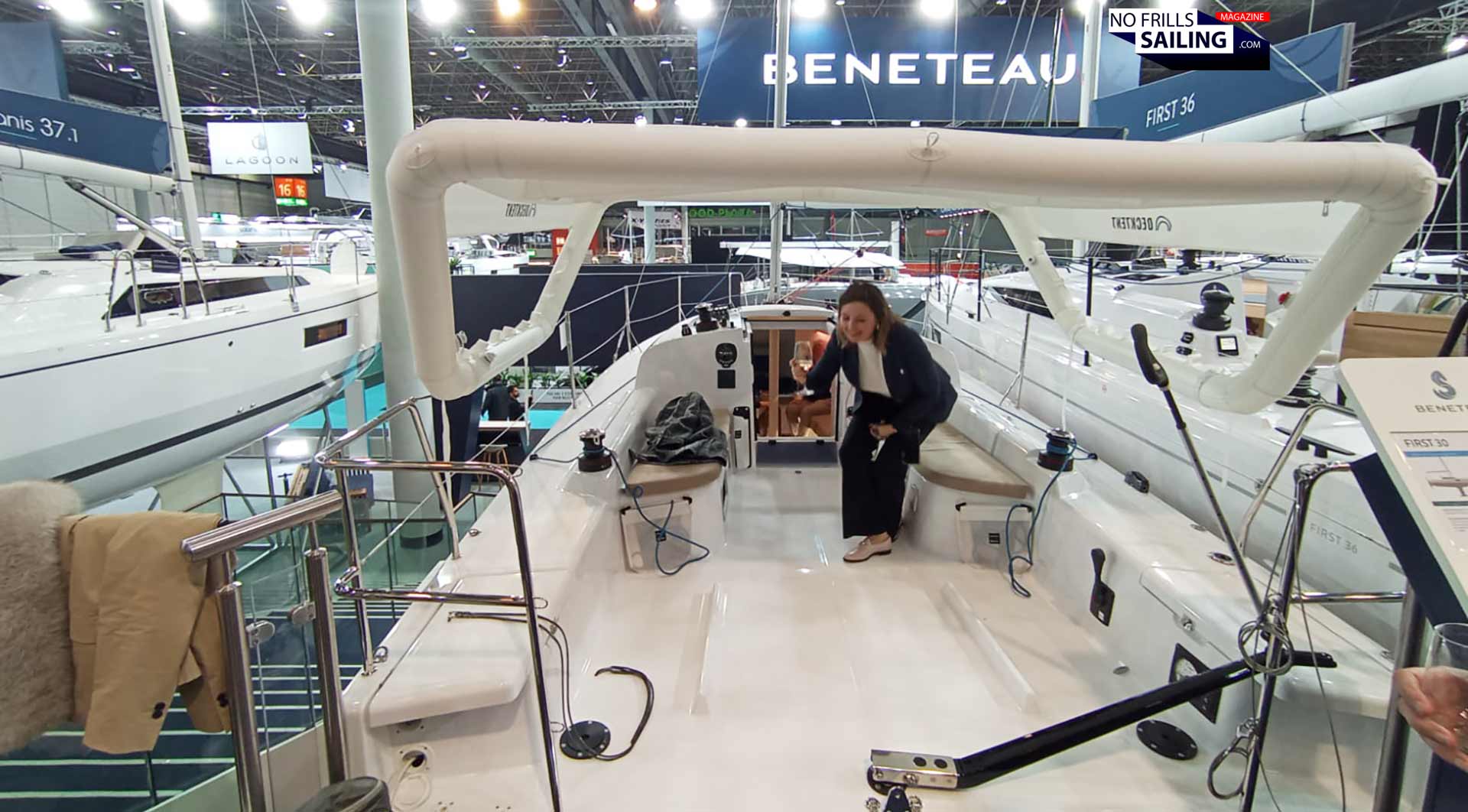
During this year´s edition of Boot Duesseldorf in January, I had been approached by an old acquaintance on the Beneteau booth. It was Eric Halada, sales representative for Ultra Marine anchors, who introduced me to Aaron Bunton. Aaron however is the distributor of a pretty interesting new product: Decktent. Both were so enthusiastic about it and keen to show it, that we staged a spontaneous live product presentation on the new First 30. Now, one season after introduction of this “inflatable bimini”, as I had dubbed it, I wanted to know how going to market had worked out for Eric and Aaron.
Every boat needs a bimini, period.
It looks a bit awkward, you probably think right now. And honestly, this was my first impression as well. But the more you think about it, the clearer their idea becomes. And the true benefit of Decktent. Of course we all know that protection against the harm of UV-radiation is a number one priority for every seagoing vessel – be it a sailboat or a motor yacht. The risk of skin cancer is much higher among sailors, especially when talking about kids aboard. So basically: Every single boat needs a bimini, or at least, some protection against direct sunlight.
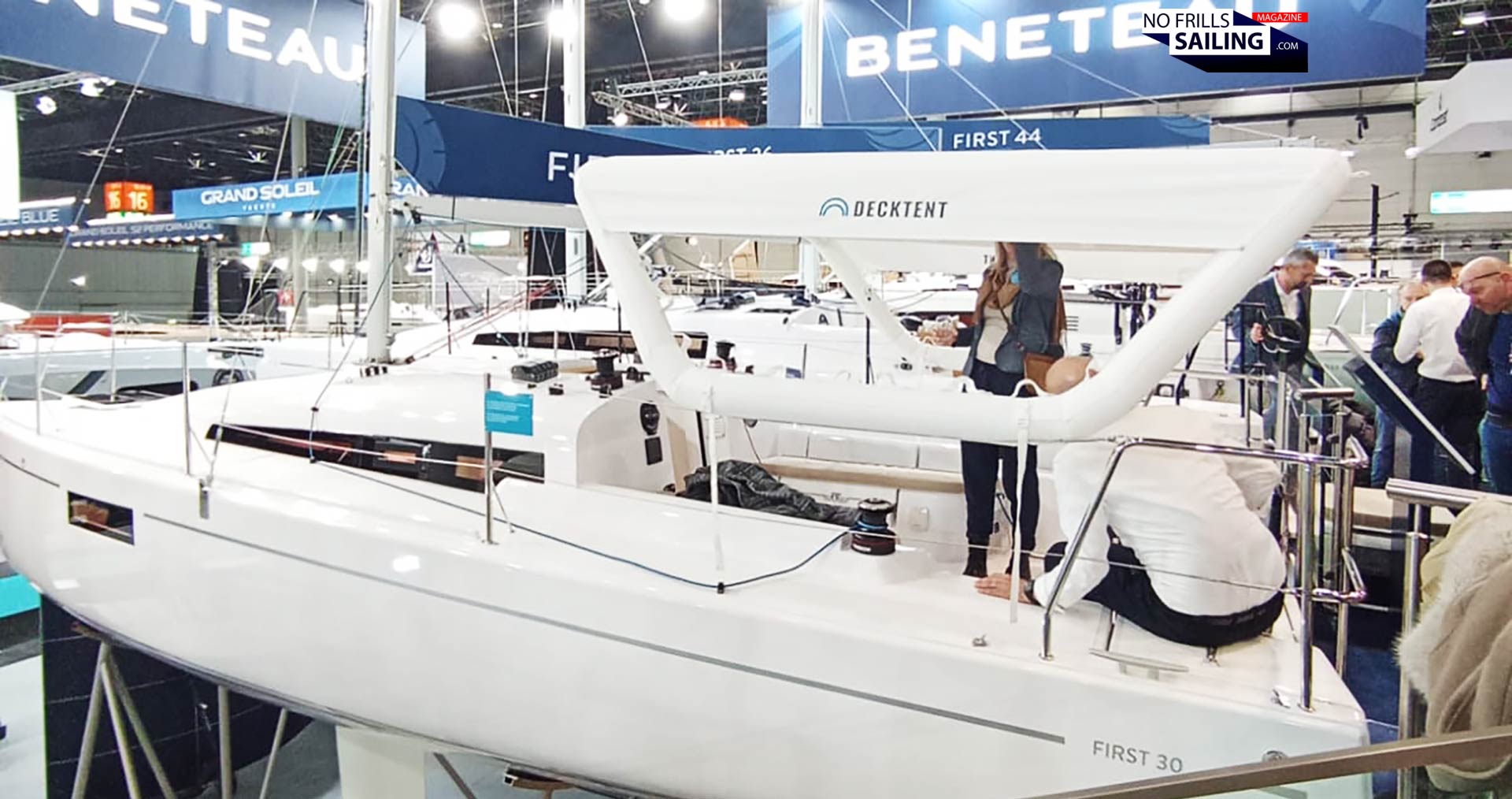
On the other hand, boat biminis is a hot topic. I must admit that I am not familiar with any solution that is looking good on a yacht. Honestly, the ongoing trend to have those big-ass solid T-Top-style biminis fitted to bigger sailing yachts is destroying the good looks of any sailing yacht in my opinion. Be it the Oceanis Yacht 60 or the Oyster, it´s just destroying the fine lines. Same goes for the classic folding biminis. Fumbling around with the rods and bars, those biminis aren´t any better in my eyes in terms of looks. This is in fact a real question for me as I am just building my own new boat: How am I going to make sure that my guests, my kids and myself are well-protected when sailing? Of course, neither a solid T-Top nor a classic bimini is an option on the Omega 42. This is where Decktent offers an alternative.
Talking to the Decktent inventor
Marc Climent, CEO and founder of Decktent, is a keen sportsman. Surfing, Kite surfing, catamaran sailing … you name it. If it´s fast and fun, it´s Marc´s thing. I reach out to mark in order to get to know more about the “inflating bimini”, as he is obviously the source, the guys who came up with the idea in the first place. So I ask him: “How has your Decktent been invented? What was the “Eureka!”-Moment that sparked the initial design phase?”
Marc Climent | Decktent: “The idea for Decktent was born out of a real need. During a holiday on a boat with friends, we were struggling with the heat. But there wasn´t anything aboard to create a cool shadow. So I turned on the stuff we´ve had aboard with us. I ended up becoming creative with my own kitesurfing equipment: To improvise a solution, I placed the kite on the bow and … voilá: There was it, shadow at last! This is when an idea sparked in my head. Because the bow area is where much of the space is usually left unprotected from the sun. But it´s also a great area to being utilized. Back at home we looked at the solutions available on the market. And honestly, we found them to be ineffective and aesthetically poor. From that initial idea, we began to develop and refine our own design. It´s as simple as that – it all began with a surfing kite improvised to create shadow …”
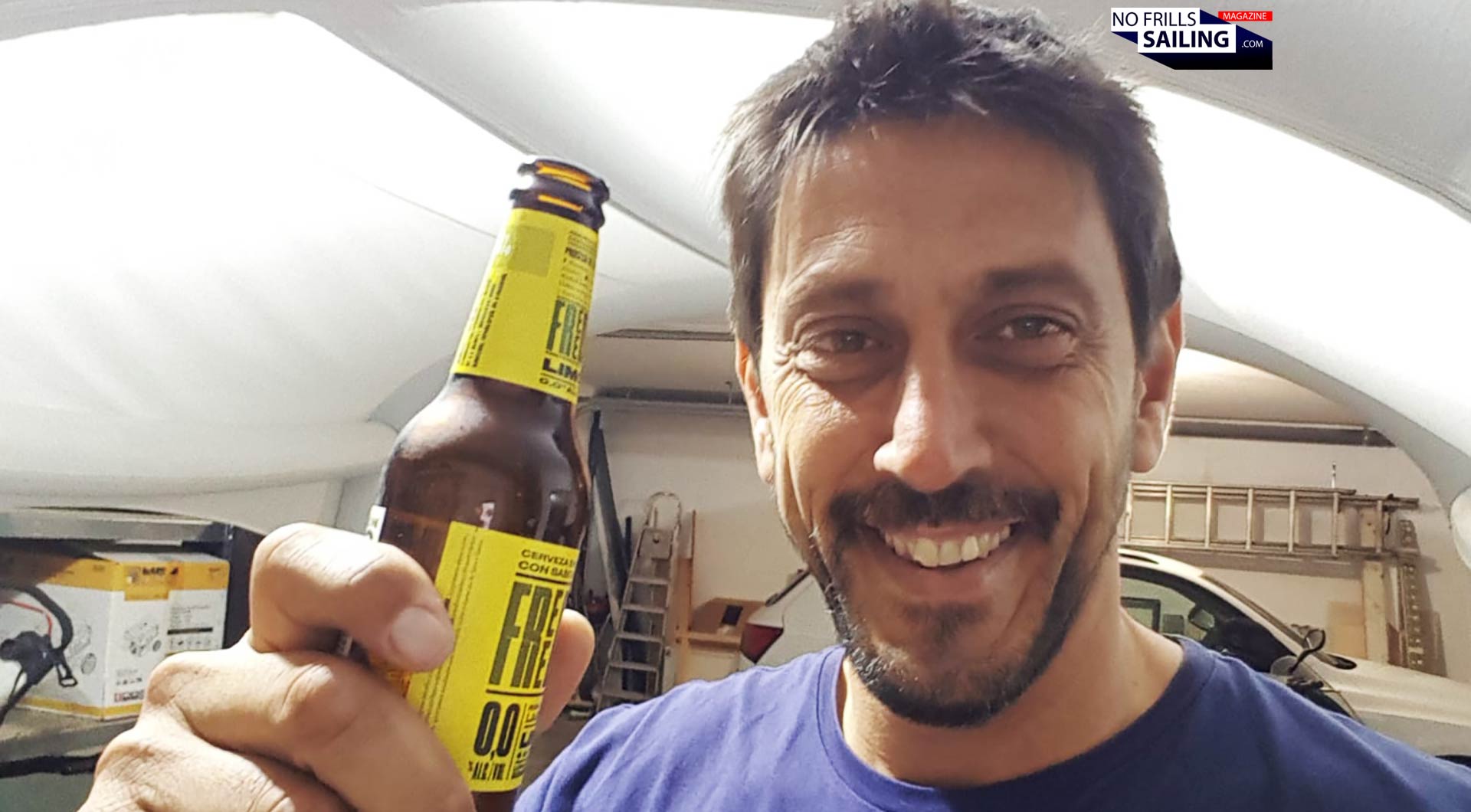
Lars Reisberg | NO FRILLS SAILING.com: “Can you elaborate a bit more on the principal steps or design iterations you´ve taken to arrive at the end-product?”
Marc Climent | Decktent: “Yeah, sure! The development of Decktent went through several key stages. First, we validated the initial idea by testing different improvised configurations. Again, all with kitesurfing kites! The aim was to check their feasibility as a nautical shade. Then, we created sketches and small-scale prototypes which allowed us to study the proportions, but also tension, and of course different materials. Once the concept was validated, we built full-scale functional prototypes that we tested on different boats and under various weather conditions. As you can imagine, each single iteration helped us improve the ease of assembly, stability, and overall aesthetics. Finally, we refined the design and manufacturing details until we reached a final product that combines functionality, durability, and elegance. To say the least: We are so very proud of the final result!”
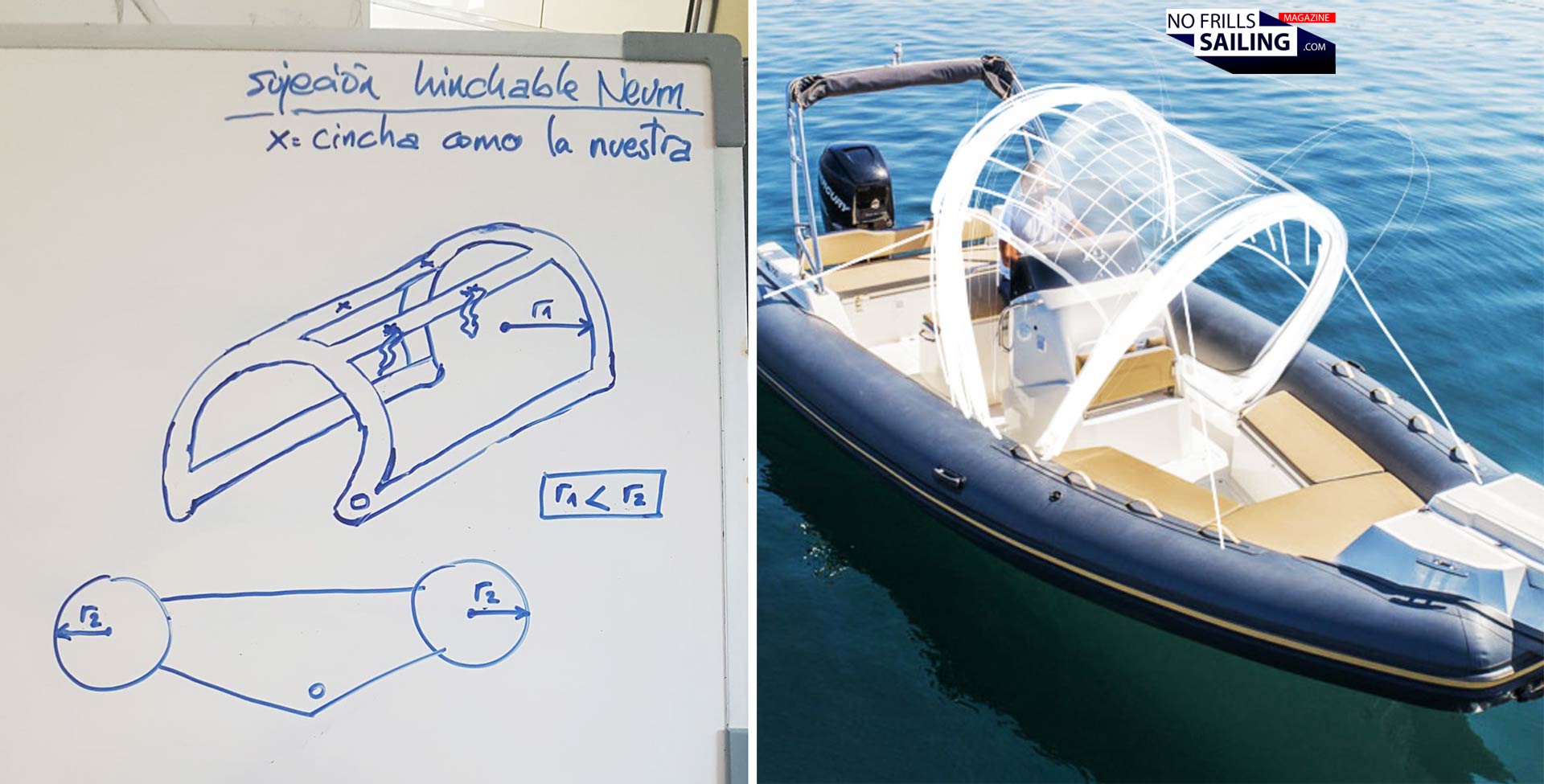
Lars Reisberg | NO FRILLS SAILING.com: “It´s a carzy story, to be honest, to literally turn a surfer´s kite into a sunshade. And bring this to market, for sure, must have been a huge untertaking: What have been the top challenges to get it series-production-ready?”
Marc Climent | Decktent: “Yep, you are absolutely right, Lars! The journey to full scale production has been full of challenges. But it was also a story of growth. The most demanding aspects were finding the right partner who could meet our standards of quality at a sustainable cost. In the end, we need a durable, high-grade product that must sustain harsh natural effects, like UV-radiation. Secondly, securing the funding to move forward was also an adventure in itself. Last not least and above all, building not just a product but a whole new brand and a company around it is a tough task! You see, having an idea is quite easy as the real test is turning that idea into something tangible that people can trust, love, and make part of their lives.”
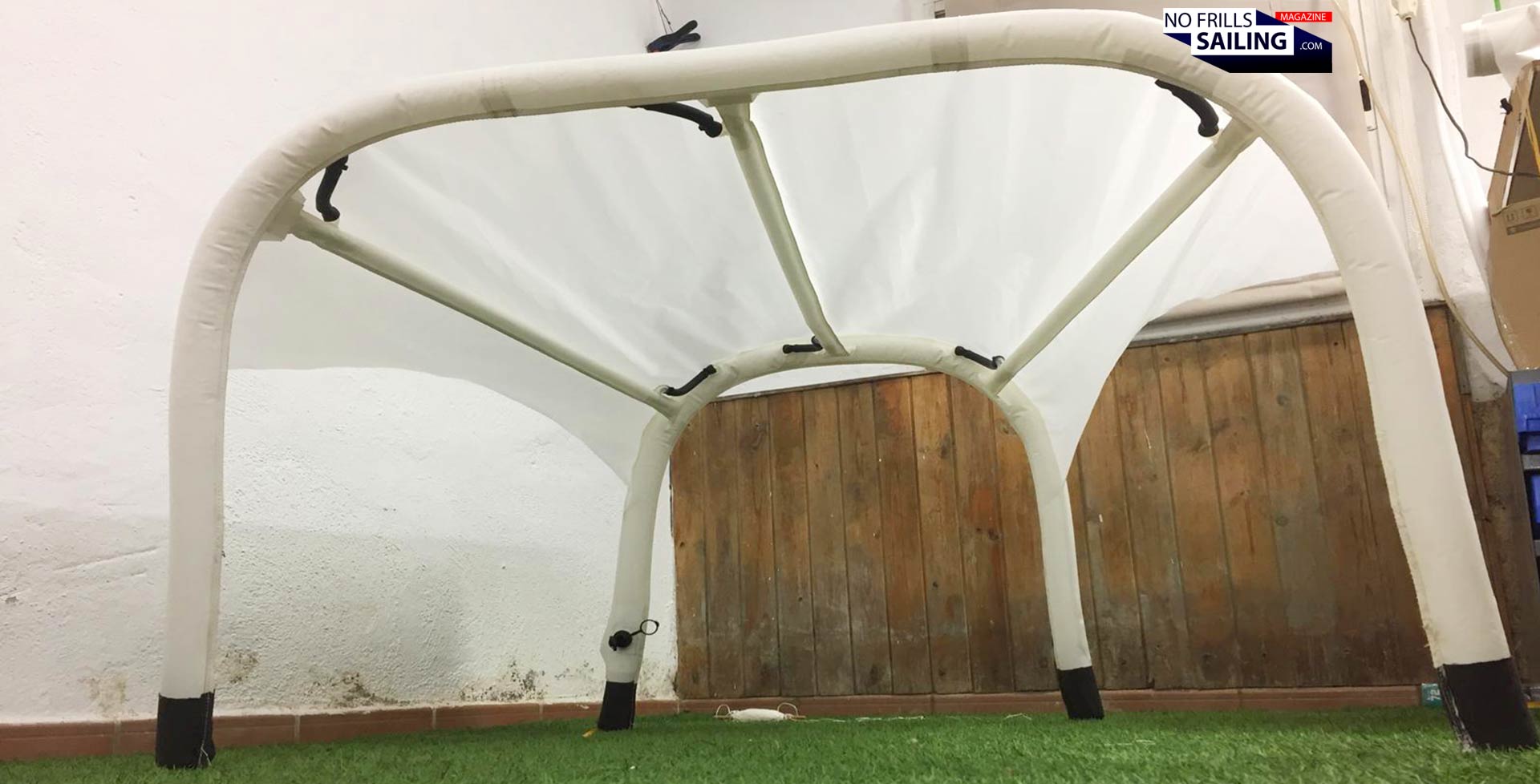
Lars Reisberg | NO FRILLS SAILING.com: “Let´s talk about the Decktent itself. Is it still made from the kite-material? What about UV-, salt water- and wind/storm-resistance of the product?”
Marc Climent | Decktent: “So, first of all, Lars, our Decktent is not just about giving shade. It’s about creating a reliable haven at sea. About your chance to finally enjoy the whole of your boat and creating a unique experience with all the new products as a brand. That’s why we chose a premium technical fabric engineered to stand up to the elements. It offers 30 SPF (sun protection factor) protection, endures saltwater without compromise, and maintains its quality even under long sun exposure. Just as important, it is designed to withstand strong winds and shifting weather. We have designed it to even collapse in strong or sudden crosswind gusts, but not to break. These features should be giving sailors the confidence that their shelter will remain secure. We don’t want our customers to choose between elegance and performance.”
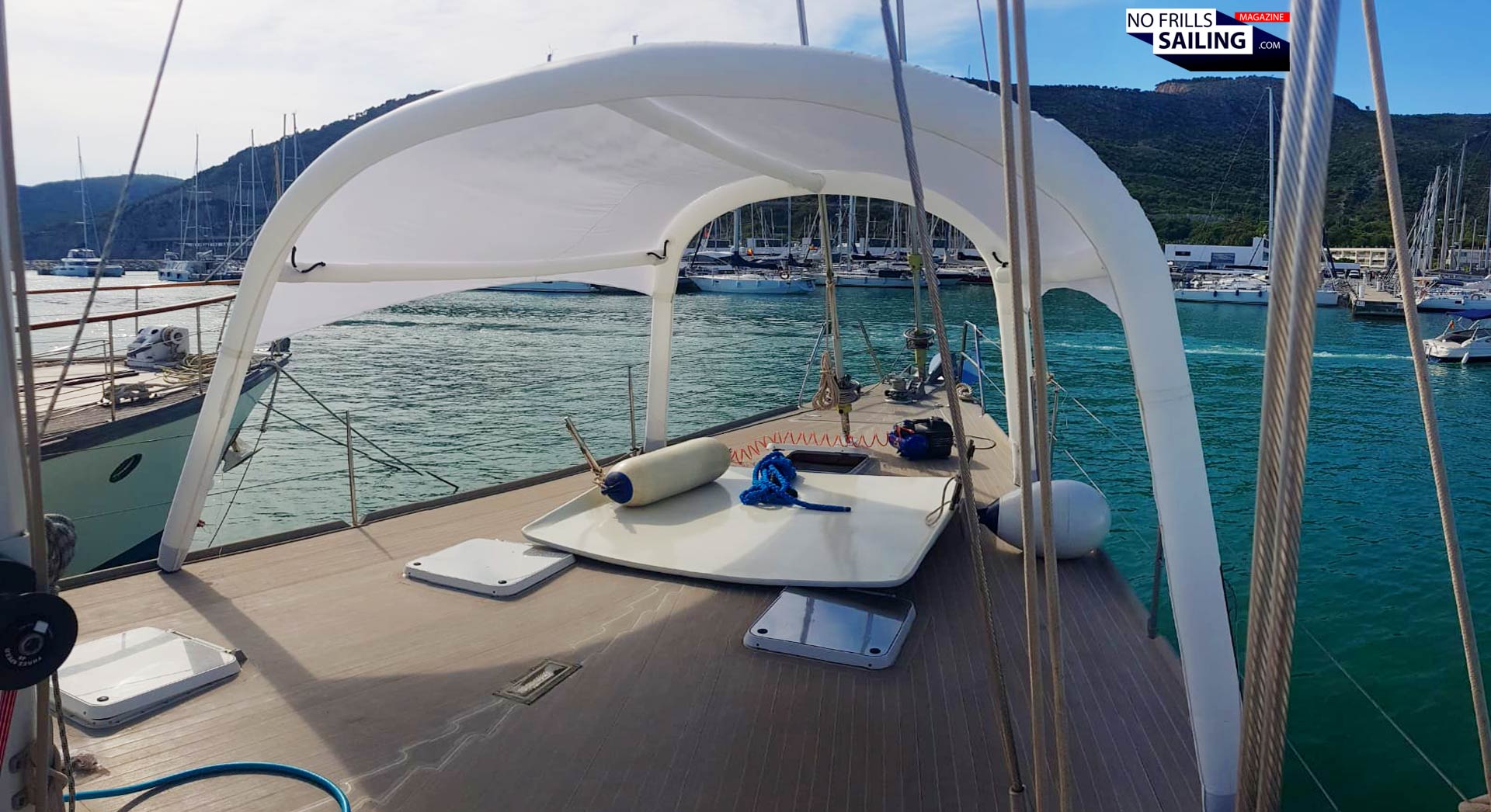
Lars Reisberg | NO FRILLS SAILING.com: “So who are your customers really? Who is buying Decktents? Are these people like me who don´t like or cannot fit permanently installed Biminis maybe?”
Marc Climent | Decktent: “Our very first prototypes were built and tested on a friend’s 60-foot sailing yacht. But to be honest, looking back, it was a mistake to begin with such a niche segment. There are far fewer large sailboats than other types of vessels in need for our product. But this gave us the chance to experiment, to learn, and to shape the product from real-life experience. One of the things that struck me most during those early tests was how long it takes to set up a conventional aft bimini if it isn’t already in place. In contrast, Decktent inflates in just two minutes and can be installed anywhere on the boat, offering instant shade and unmatched versatility. In fact, you can even throw it in the water and it will float without any problem! What makes our product so special in my eyes is not just the wide shade it provides or how quickly it can be set up. It´s the the freedom it gives, really! You can use it at sea, take it down in minutes, and bring it to shore. It’s waterproof, portable, and adaptable: Just as comfortable in a marina, a garden, or on a remote beach. That’s why nowadays even superyachts carry our Decktents, using them as part of their exclusive beach setups. I personally think we have brought a “flexibile” new solution to an old problem, and every sailor can take advantage of it. So, to answer your question who is buying Decktents: The beauty is that it’s for every boater, for every boat size. For anyone who wants to experience their time on the water to the fullest. Whether on a motorboat, a RIB, or a sailing yacht.”
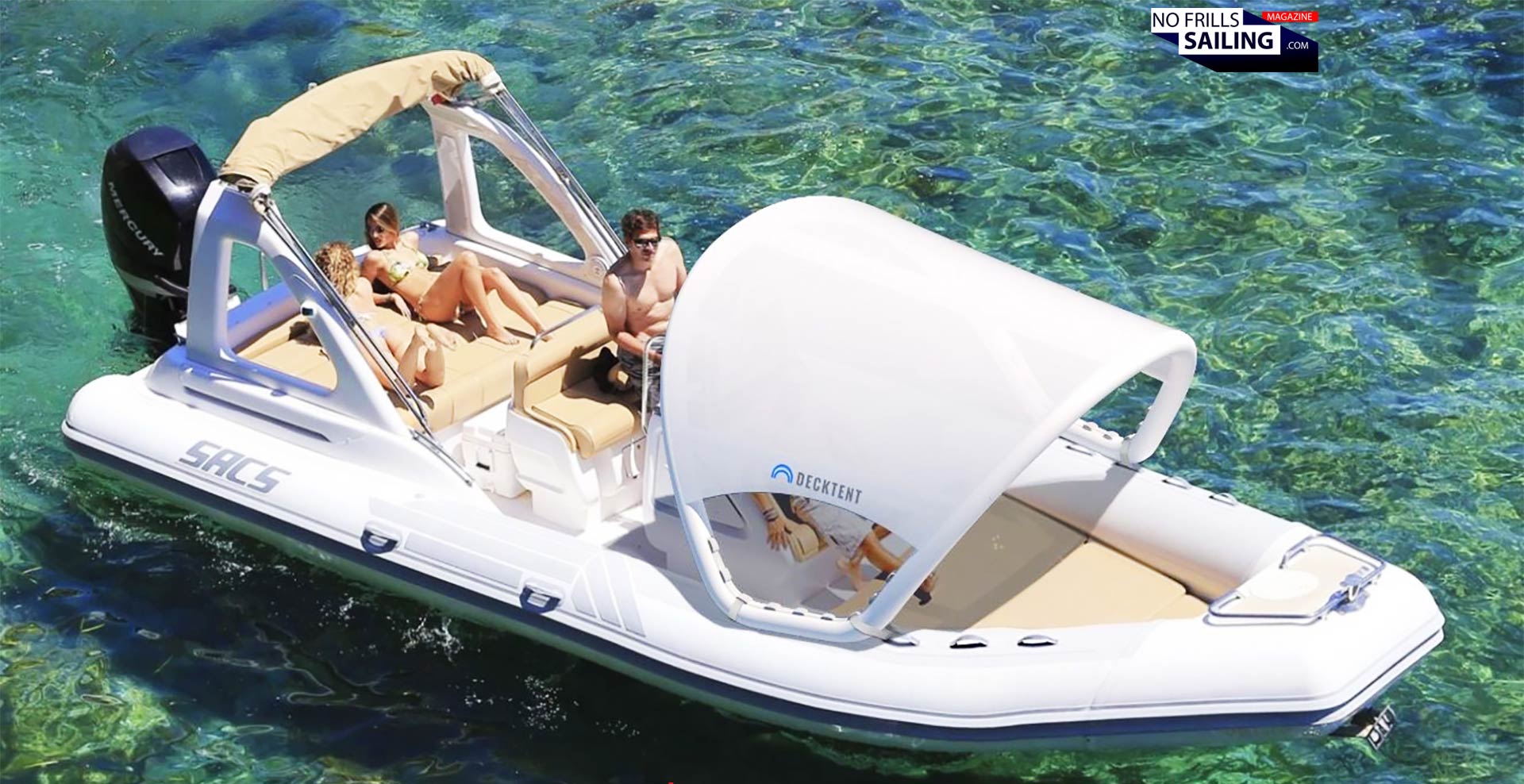
Lars Reisberg | NO FRILLS SAILING.com: “What do you love about Deck Tent most, personally?”
Marc Climent | Decktent: “You know, I am its creator, so it is my baby, indeed. What I value most about Decktent is having turned an idea into a real product that really helps people. And having successfully brought it to market. On a practical level, what I personally love most is its portability: Being able to pack it into a backpack, carry it anywhere, and use it in any situation. Its strength, versatility, and adaptability make it truly unique. What’s especially rewarding are the reactions we see at trade shows: People stop in front of the stand, some applaud and say: “Now we´ve finally got a solution!”, or even: “This is the only truly new thing at the show!” You can imagine, those moments are deeply satisfying.”
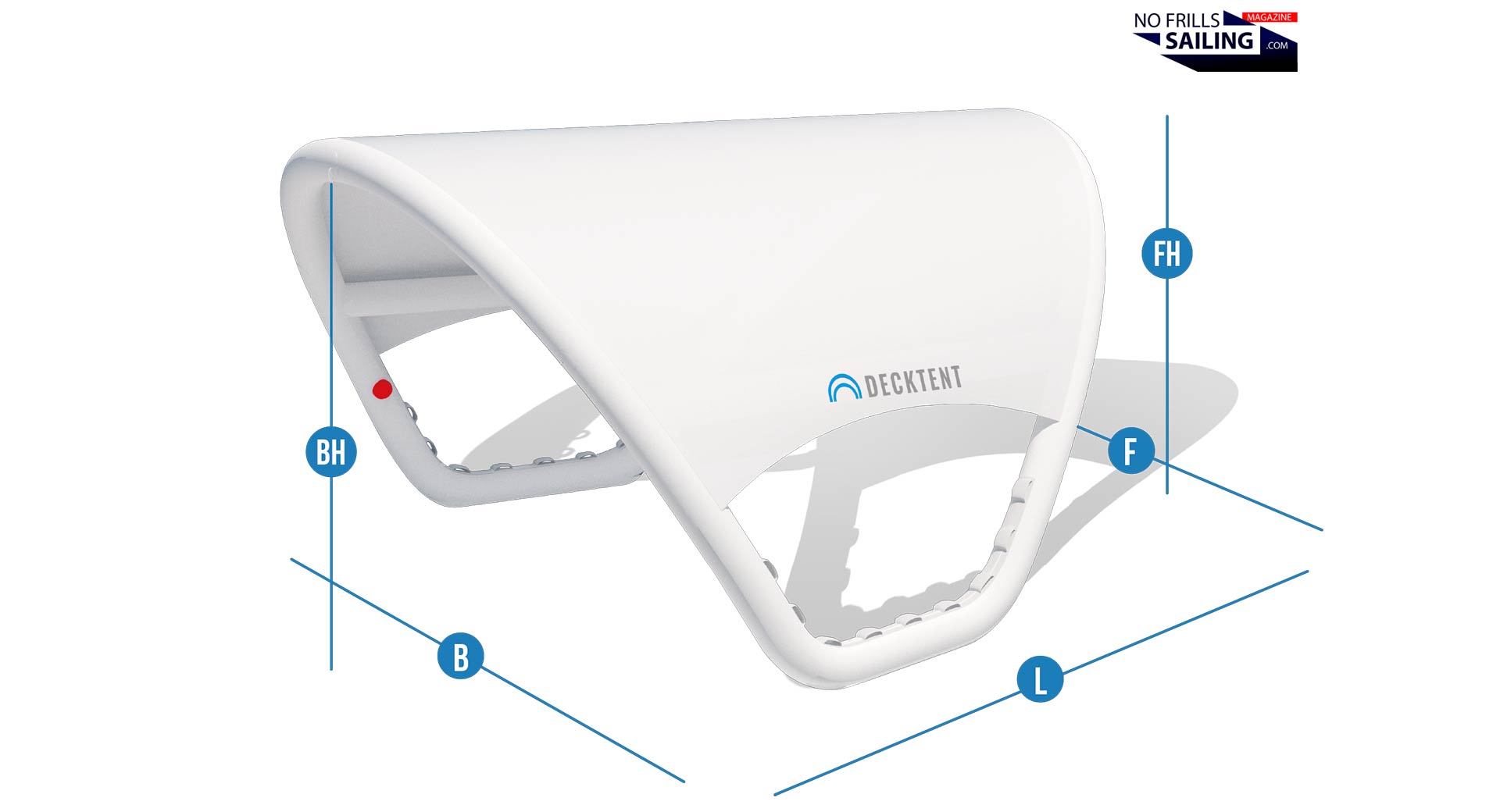
Lars Reisberg | NO FRILLS SAILING.com: “Checking your website, Decktent offers far more than the original bimini. Can you give an outlook on future add-ons, developments or projects you have going on?”
Marc Climent | Decktent: “As I said, innovation at Decktent has never been just about creating shade. It’s about solving real problems for people on the water. That’s why our catalogue has grown to over 20 different designs, each born from listening to boaters and understanding their needs. Some are even made to support people with limited mobility, others to bring more comfort to pets onboard and many to make life at sea simpler and more enjoyable. But our vision goes further. The challenge for the future is to produce in a truly sustainable way. This means using smarter materials and greener processes without ever compromising on the strength and quality that define Decktent, because innovation should not only improve life today, it should also protect tomorrow. You know it: As a keen kiter and surfer, I love nature, the freedom of the ocean. I don´t want to spoil this richness and beauty with my own products.”
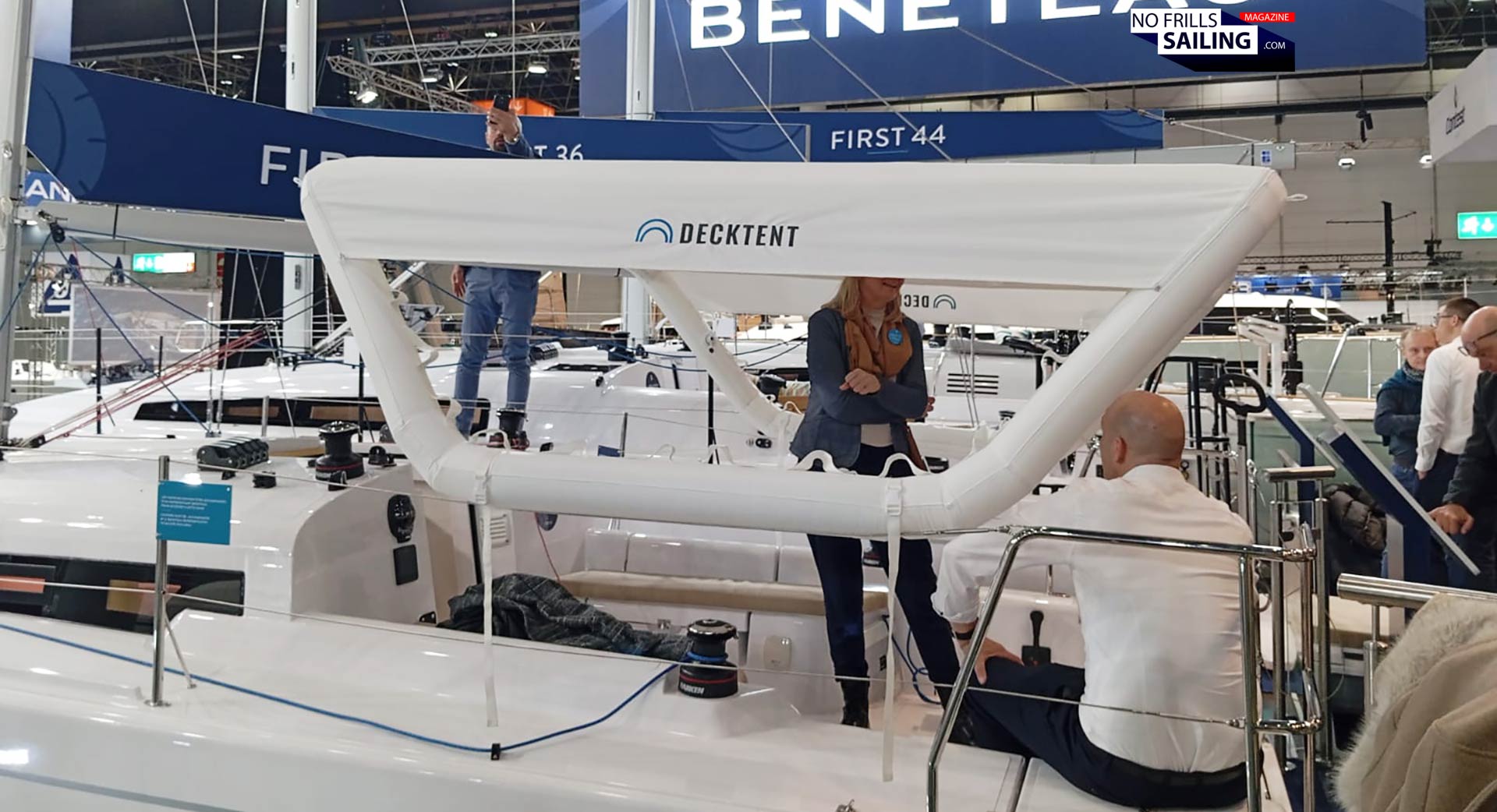
Thanks so much, Marc, for these insights. I see the benefits and vision and now that I know that Decktent isn´t just about … deck tents, it´s even more impressive what you have set up in such a short time. If this is a feasible solution for my Omega 42 I don´t know. I´ll probably have to check it out in real life, I guess …
Related articles which may as well be of interest:
Sailing and skin cancer – there is a connection!
Never without: Why an SUP can easily take on many Dinghy-tasks on your boat
A flash of wit. Reducing single-use plastic waste in boatbuilding
